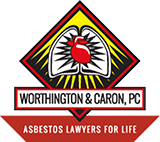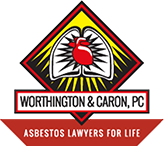
Mesothelioma Empowerment
A Timeline of Asbestos and Talc
Beginning in the 1930s, medical and scientific literature emerged indicating talc was commonly, if not invariably, contaminated with substances known or suspected of being carcinogenic, such as asbestos, silica, quartz, nickel and arsenic. Within the next several decades, an ever-growing body of medical and scientific literature demonstrated that direct and secondary exposure to talc, including asbestos-containing talc, was hazardous to exposed persons’ health in that it could cause lung disease, cancer, and death.
Defendants and their affiliates, employees, agents and/or suppliers were members of the National Safety Council. In March of 1933, Waldemar C. Dreesen of the United States Public Health Service reported to the National Safety Council the results of a study conducted among tremolite, talc and slate workers. The study indicated that the talc was a hydrous calcium magnesium silicate, being 45% talc and 45% tremolite, and the National Safety Council stated “The results of the study seemed to indicate a relationship between the amount of dust inhaled and the effect of this dust on the lungs of the workers.” As early as 1934, the National SafetyCouncil was publishing information stating that “a cause of severe pulmonary injury is asbestos,a silicate of magnesium.”
In the September 1935 issue of National Safety News, an article entitled “No Halfway Measures in Dust Control” by Arthur S. Johnson reported lowered lung capacity resulting from “asbestosis” and “similar conditions” that developed “from exposure to excess of many mineral dusts relatively low in free silica content.” The article further noted that claims for disabilities from workers who alleged exposure to “clay, talc, emery, and carborundum dusts” had “claims prosecuted successfully.” The article concluded that “[i]n the absence of adequate diagnoses, occupational histories and a more satisfactory method of adjudicating claims than prosecution at common law, we must conclude that it is necessary to find a practical method for controlling all mineral dusts.”
In 1936, the National Safety Council published an article entitled “Lesser Known Facts About Occupational Diseases” stating that “exposure to asbestos fibers, present in the weaving and grinding of dry asbestos material offers another type of dust which may cause fatalities among workers.” In 1958, The New York Department of Labor published Industrial Code Rule No. 12 establishing regulations applying to all employees and employers relating to dangerous air contaminants and listing both asbestos and talc as such substances.
In 1968, a study presented at the American Industrial Hygiene Conference & Exposition and published in the American Industrial Hygiene Association Journal concluded that “[a]ll of the 22 talcum products analyzed have a… fiber content… averaging 19%. The fibrous material was predominantly talc but contained minor amounts of tremolite, anthophyllite, and chrysotile as these are often present in fibrous talc mineral deposits… Unknown significant amounts of such materials in products that may be used without precautions may create an unsuspected problem.” L. J. Cralley, et al., Fibrous and Mineral Content of Cosmetic Talcum Products, 29 AM. IND. HYG. ASSOC. J. 350-354 (1968).
A 1976 follow-up study conducted by researchers at Mount Sinai Hospital in New York concluded that “[t]he presence in these products of asbestiform anthophyllite and tremolite, chrysotile, and quartz indicates the need for a regulatory standard for cosmetic talc…We also recommend that evaluation be made to determine the possible health hazards associated with the use of these products.” Rohl A.N., et al., Consumer Talcums and Powders: Mineral and Chemical Characterization, 2 J. TOXICOL. ENVIRON. HEALTH 255-284 (1976). The Mount Sinai study results were published by various newspapers, including the New York Times and the Washington Post.
In the early 1970s, the FDA began an inquiry into whether to regulate and require warnings on consumer talcum powder products. Defendants and the CTFA, an exclusive lobbying and advocacy group representing companies engaged in the cosmetic products industry, repeatedly conspired and worked in concert to block efforts to label and warn consumers regarding the dangers associated with such cosmetic talcum powder products as Defendants’ products.
In 1971, the New York City of Environmental Protection Administration Air Resources Board conducted a study of two “leading” brands of talcum powder using transmission electron microscopy (“TEM”) and X-ray diffraction analysis (“XRD”), and found them to contain 5-25% tremolite and anthophyllite asbestos fibers.
In August of 1971, a symposium to discuss the issue of asbestos content of talcum powders assembled the FDA, members of the talc industry, government officials, and doctors and scientists from Mount Sinai Hospital — then the epicenter of the medical and scientific study of asbestos. Among other statements, participants and attendees heard that: asbestos should be banned in talcum powders; models should be set up to measure the levels of asbestos exposure experienced by persons using talcum powder containing asbestos at the lowest level of microscopic detection; and finding asbestos in talc and talcum powder is extremely difficult, and the only truly reliable way to determine the asbestos content of talc and talcum powder is through TEM and electron diffraction. Defendants, citing costs as well as their fear of the public learning talc was contaminated with asbestos, ignored and completely rejected any measures to meaningfully test talc products to make sure they were free from asbestos and other carcinogens.
After this 1971 symposium, Dr. Weissler of the FDA hired Dr. Seymour Z. Lewin to test commercially available talcum powders for asbestos. Dr. Lewin tested 195 samples and found asbestos of varying amounts in 43. The results, however, were uncorroborated by two other laboratories, leading the FDA to the conclusion that XRD, optical and electron microscopy, and electron diffraction must be used to detect asbestos in talc and talcum powders.
Contemporaneously, evidence began to emerge from testing conducted by various regulatory agencies revealing that asbestos was being found in food, beer, and drugs, including intravenously injected medicines. In 1972, and later in 1973, the FDA filed notices of proposed rulemaking requiring talc used in food, food packing, and drugs to be asbestos-free. The talc in these products were among the same grades of talc used by Defendants.
The talc industry’s response, including that of the Defendants, was swift and well-coordinated through the CTFA, an exclusive lobbying and advocacy group representing the cosmetics industry that conspired and worked in concert with Defendants to purposely create a flawed, voluntary testing and surveillance methodology for detecting asbestos in talc and block efforts to label and warn consumers regarding the dangers associated with the talc products, including Defendants’ products.
Regarding the FDA’s proposed 1972 ruling-making, Dr. Schaffner, the FDA Director of Product Development and Cosmetics, invited representatives of the talc industry to a meeting in August of 1972 to discuss the results of Dr. Lewin’s study and inform them that the FDA was preparing to release a “Proposed Statement of Policy On Asbestos in Cosmetics Containing Talc.” Dr. Schaffner explained that he was duty-bound and must publicize the brand names of the talcum powders that contained asbestos. The CTFA’s president, Dr. Merritt, strongly objected to the FDA alerting the general public and publishing the brand names of the talcum powders, as it would cause the manufacturers “economic hardship.” Dr. Merritt also threatened to sue the FDA to prevent the disclosure of the brand names. Unsurprisingly, the FDA, Defendants, and the CTFA never revealed or publicized the brand names of the talcum powders that contained asbestos, much to the detriment of the Plaintiffs and the general public. On September 2, 1973, the Scientific Advisory Committee of the CTFA decided to create the “CTFA Talc Subcommittee” to study the optical microscopy method proposed by the FDA. Subsequently, on October 4, 1973, the first meeting of the CTFA Subcommittee of the Scientific Advisory Committee on Asbestos in Talc (“SAC Subcommittee”), which consisted of 14 members, was held at the Colgate-Palmolive Co.’s Research Center, located in Piscataway, New Jersey. In attendance were Dr. David Hammar, Dr. DeWitt Petterson, and Dr. Robert Rolle of Johnson & Johnson, as well as Ray R. Krammer and Fred Roesch of Whittaker, Clark & Daniels, Inc. (“WCD”). Id. At this meeting, the members discussed their concern with asbestos in talc and the optical microscopy method proposed by the FDA. The SAC Subcommittee agreed to create a “Round Robin” test using six samples of talc “deliberately spiked with chrysotile and tremolite” spearheaded by Dr. Rolle of Johnson & Johnson. Id. The six deliberately spiked talc samples were tested by multiple companies and agencies, including Johnson & Johnson and WCD. Despite the deliberate contamination, the final report showed that the spiked talc samples “passed” the majority of the testing (i.e., “non-detect” for asbestos). Based on the results of the October 1973 testing, rather than admit the inadequacy of its testing methods, the CTFA recommended to the FDA that there be a “postponement of the finalization of the proposed regulation of talc.”
On December 10, 1973, the CTFA issued its “Report of CTFA Talc Subcommittee on Method to Detect Chrysotile and Tremolite in Talc.” (12/10/1973 memo from G.W. Sandland to the Members). In this report, the CTFA Talc Subcommittee discussed the results of the “Round Robin” analysis that was performed using the optical microscopy method proposed by the FDA. Chrysotile was detected in all samples tested by Harold Stanley of Pfizer and Dr. John A. Reffner of Avon. Additionally, chrysotile and tremolite were detected in all samples tested by Richard E. Stevens of WCD. Therefore, the CTFA determined the following: 1) optical microscopy could not always detect chrysotile and tremolite asbestos, even in spiked samples; 2) XRD had a sensitivity limit and was unable to distinguish between fibrous and non-fibrous tremolite; 3) differential thermal analysis (“DTA”) is not capable of detecting tremolite; and 4) transmission electron microscopy (“TEM-SAED”) was the “best, most reliable method and is probably capable of detecting chrysotile and tremolite (fibrous), both at a level of 0.1%.” Id. However, the CTFA then dismissed TEM-SAED as too expensive and impractical. The CTFA Talc Subcommittee further concluded that “the method published in the Federal Register does not provide a truly reliable means for the detection of asbestos in talc. It results in both false-positive and false-negative findings. It is also tedious and may consume as much as one half day per sample.”
Two weeks later, on December 26, 1973, the CTFA wrote to the FDA regarding the “Proposed Order Method for Asbestos in Talc.” (12/26/1973 CTFA’s correspondence to the FDA). In this correspondence, the CTFA criticized the FDA’s proposed “optical icroscopic method” as unreliable and tedious, and urged the FDA to defer finalizing the proposed method until the FDA and the CTFA could develop a “truly reliable method.” Id.
On June 21, 1974, the CTFA Task Force on Methodology for the Detection of Asbestos in Talc (hereinafter “Task Force on Methodology”) was held at Johnson & Johnson’s Research Center and led by Dr. Rolle of Johnson & Johnson, who was designated as the Task Force Chairman.
In its response to the “Final Report of the CTFA Talc Subcommittee” a memorandum, dated March 6, 1974, concluded, “It is quite obvious, from the disparity of results obtained in the round-robin trial, that the test, as presently designed, is not practical.” (3/6/1974 CTFA correspondence).
From there, Defendants knew that there was no such thing as asbestos-free talc— only talc in which asbestos could not be detected using the prevailing, most economic analytical methodology, XRD, which at the time could not accurately identify chrysotile asbestos in talc, nor could XRD detect tremolite asbestos contamination levels below 2-5%.
Defendants never disclosed to the FDA that the overwhelming majority of talcum powder manufacturers and sellers were not testing their products for asbestos – and even if they were, they were doing so superficially, for only four or so grams per 20 tons of pre-shipment, pre-processed talc. Defendants hid from the FDA that they were not testing off-the-shelf talc powder products, but rather old samples that were never from the end products themselves. They hid from the FDA that they were limiting their testing of talc to only one type of asbestos fiber to the exclusion of all other fiber types that are commonly found in talc deposits. What is more, to the extent Defendants found asbestos in their samples, these positive results were not reported to the FDA. Instead, on their behalf, Defendants sent letters to the FDA in March of 1976 fraudulently claiming that industry testing had shown all talcum powder products to be completely free of asbestos.
In 1976, Defendants and the CTFA developed a method for testing talcum powders products for the presence of asbestos known as the “J4-1 Method.” (10/7/1976 CTFA Method J4-1). Their J4-1 Method, published on October 7, 1976, states that TEM-SAED “offers greater sensitivity, but is not presented since it is unsuitable for normal quality control applications.” The published method, rather, relies on XRD with “the level of detection of amphibole by this method [being] 0.5% and above.” Defendants met and corresponded with members of the CTFA and third parties to individually and collectively advocate to the FDA for the use of the inadequate XRD method – which would test only miniscule portions of the tons of talc obtained from the mining sources to be used in the consumer products – followed by fewer “periodic” tests by TEM. This voluntary method was developed by Defendants and was advocated to the FDA by Defendants in lieu of regulations requiring labeling and warnings on talcum powder products, even though Defendants knew that the J4-1 Method allowed for asbestos-containing talc to be described as “non-detect.” In fact, the first “Round Robin” tests, which analyzed a “CTFA Tremolite-Spiked Talc,” resulted in 6 of 7 participating laboratories failing to detect the tremolite. In other words, 84% of the industry’s laboratories failed to detect asbestos in a sample known to contain tremolite asbestos while using the CTFA’s own J4-1 Method. There is no evidence that Defendants ever shared this remarkable failure with the FDA or the public.
There are no records of the CTFA discussing the failures of its method with the FDA. The use of TEM, recognized by the CTFA as offering “greater sensitivity” for asbestos analysis, continued to increase over the next decades as its advantages were applied to more matrices. In 1990, Kremer and Millette published a TEM method for analysis of asbestos in talc with a theoretical detection limit of about 0.00005%. Despite such improvements in analytical techniques, the cosmetic talc industry continues, four decades later, to use its antiquated and wholly inadequate J4-1 Method. It relies on XRD, a method whose 0.5% detection limit could still allow millions of fibers per gram to be present in the talc and that also ignores chrysotile, a type of asbestos the industry has known to be a common contaminant of talc. In fact, the two-tiered logic of the J4-1 Method was designed to demonstrate the absence of asbestos in that an XRD negative requires no further scrutiny. If the method had been designed to detect the presence of asbestos, it would have required that a negative XRD result be followed by demonstrably more sensitive and definitive microscopy.

Our Mission
-
Medical Empowerment
Get the information you need to make informed decisions about your treatment.
-
Legal Empowerment
Get the compensation you need to address the financial cost of your illness.
-
Going For The Gold
Helping empower our clients with over $2.5 Billion in recoveries. We fight for our clients!
-
Giving Back To The Community
Unprecedented Support for Mesothelioma Research. See how we can help!



